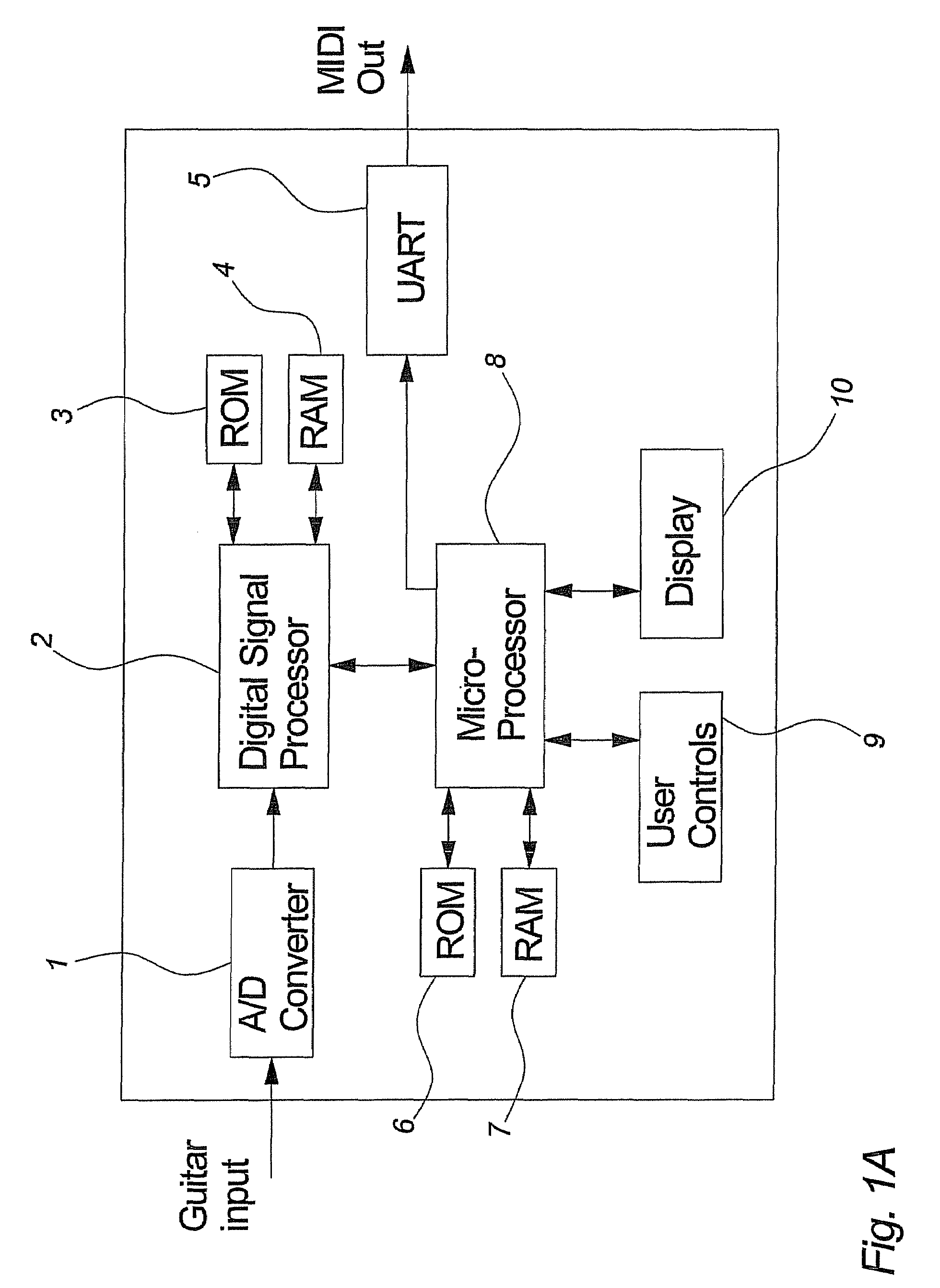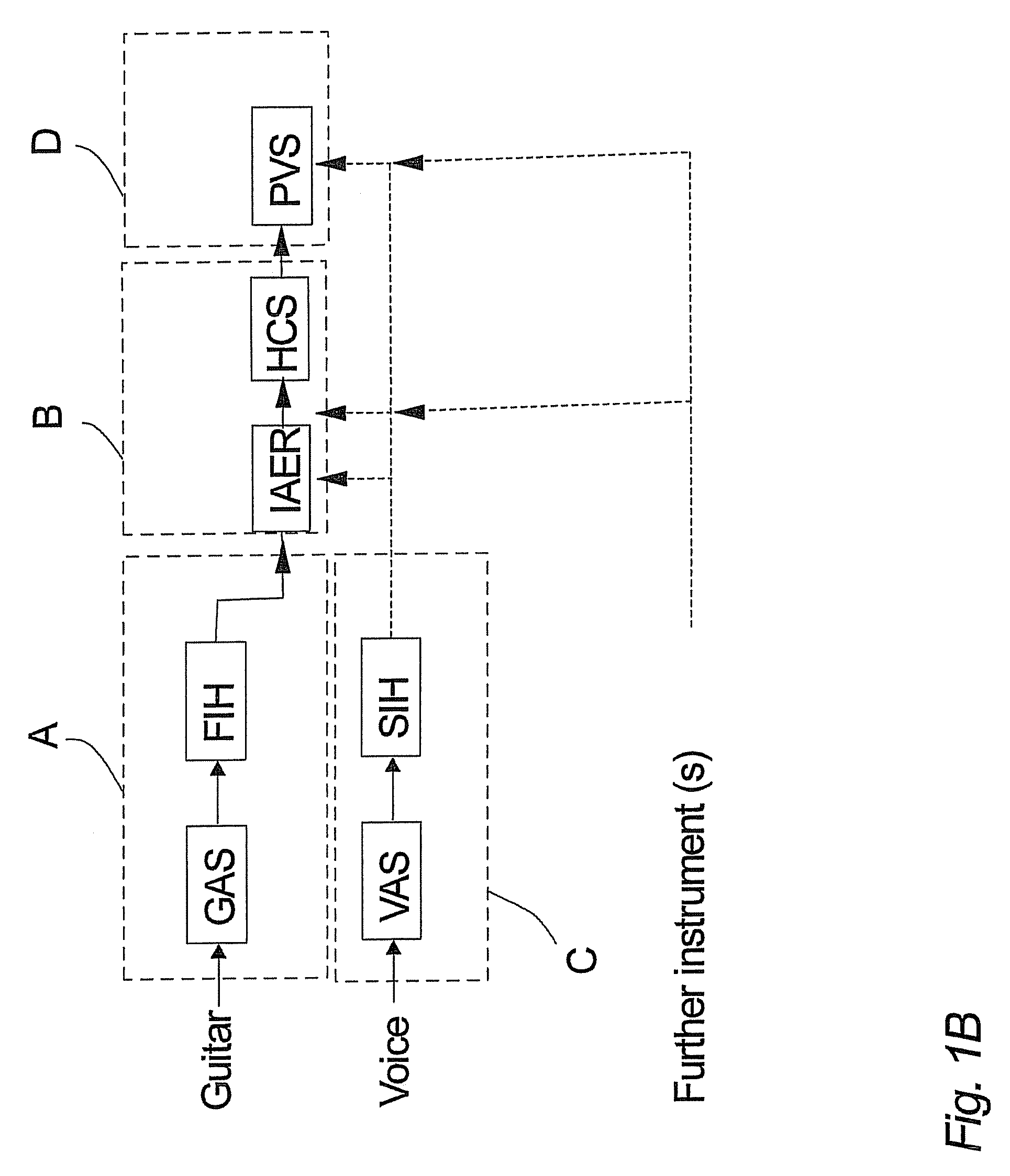Method of establishing a harmony control signal controlled in real-time by a guitar input signal
a real-time, guitar-based technology, applied in the direction of instruments, electrophonic musical instruments, etc., can solve the problem of limiting the use of state-of-the-art harmony processors, and achieve the effect of fast outpu
- Summary
- Abstract
- Description
- Claims
- Application Information
AI Technical Summary
Benefits of technology
Problems solved by technology
Method used
Image
Examples
Embodiment Construction
[0109]General information to be referred to below:
[0110]Down-sampling (or sub-sampling) is the process of reducing the sampling rate of a signal. This is usually done to reduce the data rate or the size of the data.
[0111]The down-sampling factor (commonly denoted by M) is usually an integer or a rational fraction greater than unity. This factor multiplies the sampling time or, equivalently, divides the sampling rate.
[0112]MIDI (Musical Instrument Digital Interface) is an industry-standard electronic communications protocol which enables electronic musical instruments, computers and other equipment to communicate, control and synchronize with each other in real time. MIDI does not transmit an audio signal or media but simply transmits digital data “event messages” such as the pitch and intensity of musical notes to play, control signals for parameters such as volume, vibrato and panning, cues and clock signals to set the tempo. As an electronic protocol, it is known for its success, ...
PUM
 Login to View More
Login to View More Abstract
Description
Claims
Application Information
 Login to View More
Login to View More - R&D
- Intellectual Property
- Life Sciences
- Materials
- Tech Scout
- Unparalleled Data Quality
- Higher Quality Content
- 60% Fewer Hallucinations
Browse by: Latest US Patents, China's latest patents, Technical Efficacy Thesaurus, Application Domain, Technology Topic, Popular Technical Reports.
© 2025 PatSnap. All rights reserved.Legal|Privacy policy|Modern Slavery Act Transparency Statement|Sitemap|About US| Contact US: help@patsnap.com



